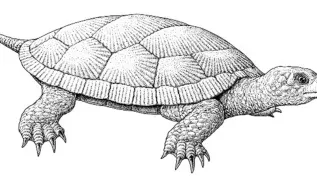
Zebrafish will be used as a model organism in research that will help understand the mechanisms of certain human diseases. International Institute of Molecular and Cell Biology in Warsaw has started the country\'s first zebrafish breeding for research purposes.
Scientists from the International Institute of Molecular and Cell Biology in cooperation with foreign partners will use zebrafish to study tumors, nervous system degeneration, aging, and diseases caused by disorders in the mitochondria.
The activities of the Institute are carried out in the now beginning project FishMed, funded by the European Commission and the Ministry of Science and Higher Education.
"Fish that we study has traits that allow to faster and cheaper carry out certain tests that can help us understand the mechanisms of some human diseases. One of these traits is that in the early stages of development zebrafish is completely transparent, allowing us to observe cells that divide, shift during development" - explained the Institute director and head of the FishMed project, Prof. Jacek Kuźnicki. He added that this allows to use the organism to carry out tests, which could not be done on mammals.
Zebrafish, next to fruit flies, mice and rats, has been used as a model organism in the scientific world for years. Prof. Kuźnicki explained in an interview with PAP that his institute started the first on this scale in Poland accredited laboratory for zebrafish breeding and research.
The researcher added that 90 percent zebrafish genome is similar to the human genome. Polish scientists proposed to they create models of human disease in this organism.
According to Dr. Ewa Snaar-Jagalska from the Dutch Leiden University, who has been conducting research on zebrafish, it is significant that the reproduction of these fish is very fast. The development of the embryo into adult zebrafish takes three months, and single pair of fish makes up to 300 embryos in a week. "This is a tremendous amount of genetic material" - noted the researcher. She added that the development of the embryo takes place outside the mother\'s body, allowing the observation of the organism at any stage of its development.
Compared to mammals, the introduction of genetic modification in fish is also simpler and faster. According to Prof. Kuźnicki, modifications can be introduced into the fish genome that can make a particular type of cell glow, making the later observation to of these cells easier.
"In addition, the fish allows to carry out research on a larger scale - examine a greater number of chemical substances with potential therapeutic effect and quickly identify those can be useful" - noted the scientist.
He explained that zebrafish breeding would not eliminate studies in mice and rats. "By using zebrafish, however, we can significantly reduce the use of mammals in research" - said head of the FishMed project.
Zebrafish is a several centimetres long fish from Asia, often kept in home aquariums.
Funds for the project FishMed will be used to establish a licensed Zebrafish Breeding Lab for scientific purposes at the International Institute of Molecular and Cell Biology, for research, purchase of equipment and cooperation with foreign researchers.
PAP - Science and Scholarship in Poland
lt/ agt/ mrt/
tr. RL













